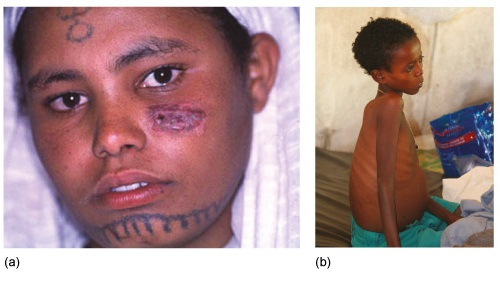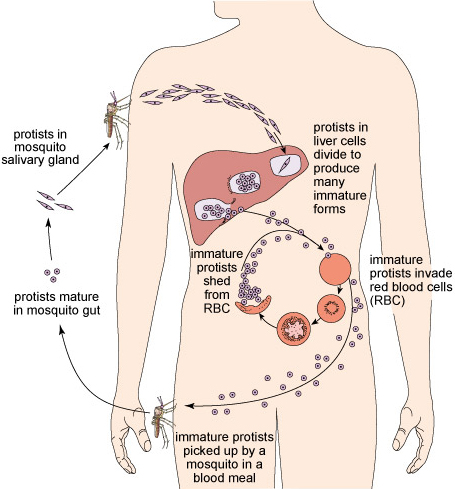3.6 Malaria and other protist diseases
The pathogenic protists that infect humans are all single-celled organisms, formerly called ‘protozoa’. They are responsible for a range of diseases, including:
- dysentery (bloody diarrhoea) caused by waterborne protists similar to the amoebae [amm-ee-bee] commonly found in freshwater ponds
- sleeping sickness, caused by protists transmitted via the bite of tsetse flies
- leishmaniasis [leesh-man-eye-ah-sis] transmitted by biting sandflies; Leishmania protists cause painful lesions in the skin, affecting around one million people (Figure 10a), or potentially fatal enlargement of the liver and spleen with up to 400 000 cases annually (Figure 10b).

The following activity describes the life cycle, impact and prevention strategies against the most widespread infectious disease caused by a protist – malaria.
Activity 3.6.1 Activity 3 Malaria: a vector-borne protist infection
The protists that cause malaria belong to the genus Plasmodium [plazz-moh-dee-umm]. Study their life cycle in Figure 35 and then answer the questions below the diagram.
Question 1
How are the protists that cause malaria transmitted to a new human host?
Answer
When an infected mosquito bites someone to take a blood meal, protists in the mosquito’s saliva get into the person’s bloodstream.
Question 2
How do the protists get into the mosquito’s saliva?
Answer
When the mosquito sucks blood from an infected person or animal, the protists are drawn into the mosquito’s gut from there they migrate to its salivary glands.
Question 3
Which human cells are routinely invaded by malaria protists?
Answer
Liver cells and red blood cells. (The protists are less than 5 micrometres (µm) in diameter at this stage – small enough to get into a red blood cell.)

